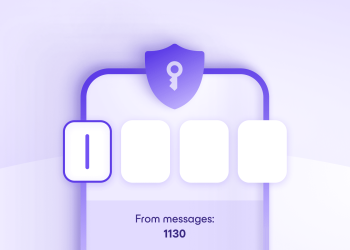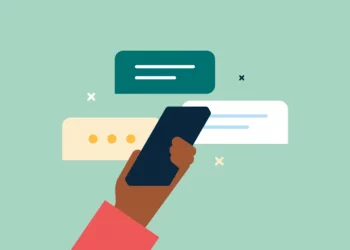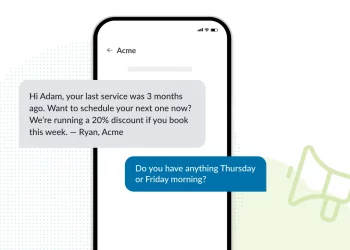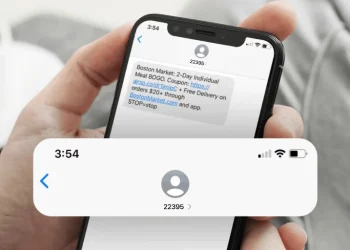What is RCS Messages
RCS stands for “Rich Communication Services,” an advanced messaging protocol designed to enhance and improve traditional SMS (Short Message Service) text messaging. RCS allows for a more interactive and feature-rich messaging experience on mobile devices, akin to popular messaging apps like WhatsApp or iMessage.
RCS Key Features:
- Enhanced Media Sharing: RCS supports sending high-resolution images, videos, and audio clips, making it more versatile for multimedia content.
- Read Receipts and Typing Indicators: Similar to instant messaging apps, RCS shows when a message has been delivered, read, and when the other person is typing a response.
- Group Chat Improvements: RCS enables better group chat functionality with the ability to name groups, add or remove participants, and share larger group sizes than traditional SMS.
- Larger Character Limit: Traditional SMS has a character limit of 160 characters, while RCS supports longer messages, allowing users to send more extended texts in a single message.
- Presence Information: RCS can show whether a contact is online, offline, or currently available, enhancing the real-time communication experience.
- Secure Communication: RCS messages are encrypted, providing higher security for conversations.
To use RCS, both the sender and the recipient need RCS support enabled on their devices, and their mobile carriers must also support RCS. Some Android devices come with native RCS support through the device’s default messaging app, while others may require you to use specific messaging apps provided by the carrier.
Texting has evolved from SMS to RCS, a more advanced platform for mobile communication. RCS messaging is a standard for mobile communication that offers more engaging messaging capabilities than traditional SMS.
What Does RCS Stand For?
RCS is short for Rich Communication Services, which is a mobile communication protocol and standard that provides messaging capabilities beyond those of traditional SMS. RCS enables users to engage in more interactive conversations, incorporating features like read receipts, typing indicators, group chats, file sharing, and high-resolution media. This next-generation messaging technology aims to bridge the gap between basic text messaging and the rich functionalities of instant messaging apps.
Key Differences between RCS Messaging and SMS
Enhanced Multimedia
RCS messaging supports high-quality images, videos, and audio files, allowing users to share multimedia content without compromising quality. Unlike SMS, which has limitations on file size and resolution, RCS provides a more immersive and visually appealing messaging experience.
Read Receipts and Typing Indicators
RCS messaging offers read receipts, indicating when the recipient has viewed the message. Additionally, typing indicators inform users when someone is composing a response. These features provide real-time feedback and improve the overall conversation experience, creating a more interactive and engaging platform.
Group Chats
While SMS limits group conversations to simple text exchanges, RCS messaging allows for dynamic group chats with advanced features. Users can create groups, add or remove participants, assign group names, and easily share multimedia content, creating a more collaborative and social messaging environment.
Chatbots and Business Interactions
RCS messaging allows businesses to engage with customers more effectively and personally. Chatbots can be integrated into RCS chats, allowing businesses to provide automated responses, deliver customer support, and facilitate transactions within the messaging interface. This enhanced business-to-customer interaction elevates the customer experience and simplifies communication.
Advanced Features
RCS messaging introduces various advanced features beyond basic SMS. These features include location sharing, suggested replies, rich link previews, and contact cards. They enhance the messaging experience, making conversations more intuitive, informative, and efficient.
Network Dependency
Unlike SMS, which operates on a basic text messaging infrastructure available on all mobile networks, RCS messaging relies on network support and compatibility. Users need compatible devices and network providers offering RCS support to utilize its capabilities thoroughly. This network dependency is a consideration when evaluating the availability and adoption of RCS messaging in different regions.
Security and Encryption
RCS messaging offers better security and encryption than SMS. While SMS messages are sent as plain text and can be intercepted or accessed by third parties, RCS messaging provides end-to-end encryption, ensuring that conversations remain private and secure. This heightened security is essential for sensitive or confidential conversations.
Delivery Confirmation
RCS messaging provides more reliable delivery confirmation compared to SMS. With SMS, there is no guarantee that a message has been successfully delivered to the recipient. However, RCS messaging offers delivery receipts, indicating when a message has reached the recipient’s device. This feature gives users greater confidence that their messages have been successfully delivered.
Customization and Branding
RCS messaging allows for greater customization and branding options than SMS. Businesses can incorporate their brand elements, logos, and color schemes into RCS messages, creating a consistent and branded customer experience. This customization helps businesses establish a more substantial brand presence and recognition within their messaging interactions.
Offline Messaging
RCS messaging supports offline messaging capabilities. Unlike SMS, which requires both the sender and recipient to be online for message delivery, RCS messaging can store and deliver messages when the recipient’s device reconnects to the network. This feature ensures that conversations can continue seamlessly even if one party is temporarily offline.
Integration with Additional Services
RCS messaging has the potential to integrate with various services, such as mobile payments, ticketing, and scheduling. This integration allows users to perform actions directly within the messaging interface, simplifying processes and eliminating the need to switch between different apps or platforms. RCS messaging can enhance convenience and efficiency in various areas of our daily lives.
Future Potential
As RCS messaging continues to evolve and gain wider adoption, the potential for additional features and innovations is significant. The ability to integrate chatbots, virtual assistants, voice commands, and other advanced functionalities further expands the possibilities of RCS messaging, transforming it into a comprehensive communication platform.
Conclusion
RCS messaging represents the evolution of traditional SMS, offering users a more interactive, engaging, and feature-rich communication experience. RCS messaging takes text messaging to a new level with enhanced multimedia capabilities, read receipts, typing indicators, group chats, and advanced features. While SMS remains widely accessible across all mobile networks, the adoption of RCS is gradually expanding as more network providers and device manufacturers embrace this next-generation messaging standard. RCS messaging promises to revolutionize mobile communication as technology evolves, providing users with a more immersive and interactive conversation platform.
Learn more about automated messaging here.














